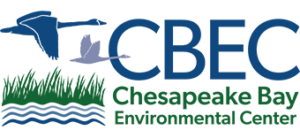Yeast – Common Inhabitants of the Phyllosphere 
Example organism: Candida species
Station Location: Lake Knapp Pavilion, GPS coordinates: 38°57’07.91”N, 76°14’00.83”W
[Go to List of Tour Stations] [Back to Station 5] [Forward to Station 7]
Taxonomy
- Domain: Eukaryota
- Kingdom: Fungi
- Division: Ascomycota
- Class: Saccharomycetes
- Order: Saccharomycetales
- Family: Saccharomycetaceae
- Genus/Species: representative organism – Candida species
The above-ground parts of plants are normally colonized by a wide variety of bacteria, fungi, algae, and protists. This collection of microorganisms is termed the “phyllosphere.” Understanding of the phyllosphere includes studies of the individual microbes present on particular plants, the interaction of the various species inhabiting those particular plants, and similar studies regarding the effects of the phyllosphere on groups of plants. Specific plants and plant communities may have unique phyllosphere profiles (i.e. specific associations of particular microbes). Such studies are important both scientifically and economically, since microbial interactions with other microbes and with their host, can have significant impacts on plant health. Understanding of the phyllosphere has lagged behind our understanding of the rhizosphere (the relationship of microbial communities with subterranean plant surfaces).
While some microbial colonists on plant surfaces may be beneficial or pathogenic to the host, it is thought that the majority of inhabitants of the phyllosphere have little or no effect on the plant. The resident microbes, however, may have antagonistic or supportive roles among themselves.
Although quantitative studies have indicated that bacteria are the predominant microbial inhabitants of above-ground plant surfaces, fungi are typically also present in impressive numbers. The Kingdom Fungi is generally divided, morphologically, into filamentous fungi (molds, mushrooms, etc.) and the single-celled organisms called yeasts. Most identified fungal plant pathogens (“phytopathogens”) are filamentous (basidiomycetes and ascomycetes). Recently, yeast species have been identified that are antagonistic toward these fungal pathogens. This research may be an example of how phyllosphere research may be useful in improving plant health.
Learn More:
Microbiology of the Phyllosphere
Each tree species has unique bacterial identity, microbiome research shows
Phyllosphere yeasts rapidly break down biodegradable plastics
The plant microbiome explored: implications for experimental botany
Review: Utilization of antagonistic yeasts to manage postharvest fungal diseases of fruit.
Notes & References:
Photo attribution: http://eol.org/pages/1013921/media (distributable under Creative Commons license)


